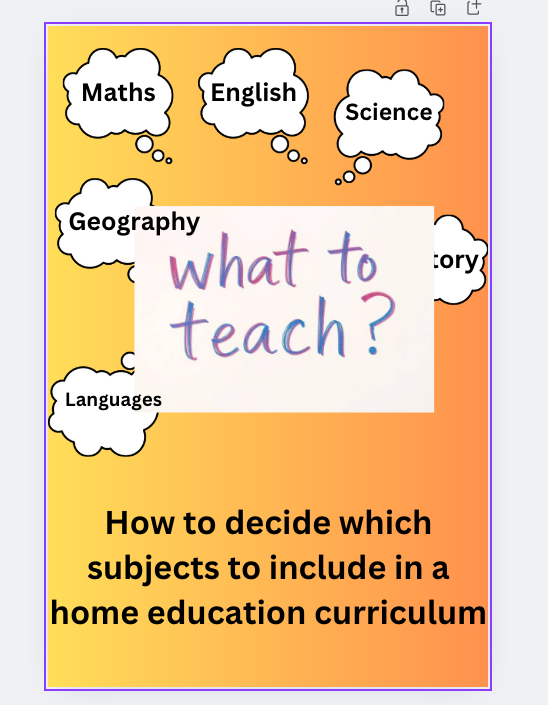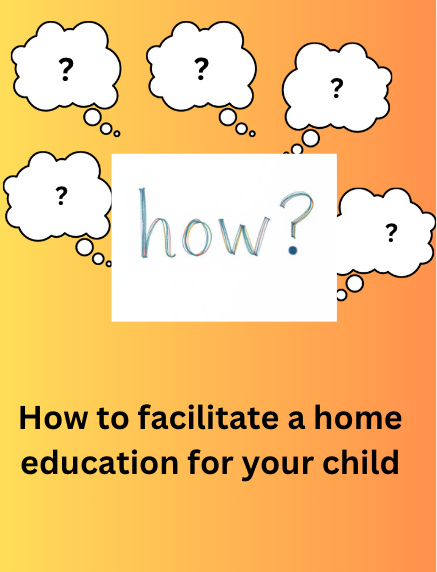Planning a homeschool curriculum is the first step to successful home education.
What will home learners study? Why are they studying what? How will that learning be facilitated?
Each new term is a chance to re-evaluate and reassess these 3 homeschool curriculum questions.
Home education gives young learners the freedom to study what they need to and what they want to learn.

There is no right or wrong subject list and whilst that’s wonderful, as a parent-teacher-head-of-school-education-coordinator, it’s also a little bit daunting: What do they need to learn?
Well, that depends on where in the world you are.
Some countries/states require certain subjects to be studied and/or for homeschoolers to provide specific proof of learning; other countries/states are more flexible.
We follow UK home education laws which means the framework is really as free as above – as parents/caregivers who home educate, you choose what home learners study, with no official obligation to teach certain subjects, nor any requirements for homeschoolers to sit exams or provide proof of learning for official inspection.
This is brilliant because it allows a curriculum to be tailored for each child’s abilities/strengths/interests; it can also be too vague to be reassuring when you’re trying to figure out the ‘what do we need to teach them’ question, as both parent and education-coordinator.
So how to decide WHAT to cover in a homeschool curriculum?
Year-on-year we decide what exactly our homeschoolers will study by writing a list with two columns: a NEED list and a WANT list. Anything in the NEED list is automatically assigned timetable space in the homeschool week; subjects/topics in the WANT list are prioritised and included as and when time allows.
Write a NEED + WANT list
- In the NEED column, list the subjects you (parent/teacher) think your home learners need to study (maths, writing, science, history, foreign language etc.) to align with your family’s education ideology/ homeschool goals/ legal requirements: Everything on this list will be assigned scheduled homeschool time. This is your core curriculum.
- In the WANT column, list the subjects or specific topics your homeschoolers want to study and any extra topics/subjects you’d LIKE to include if time allows.
Prioritise the NEED list (aka your homeschool’s core subjects) and with the hours that are left in the day, schedule blocks of time into the homeschool day to cover one/two/three of the subjects or topics learners themselves have chosen.
Because these aren’t core subjects, you can be flexible in the commitment to them – spend a few weeks on one topic, a month on another.
These are topics and subjects that might spark an interest, introduce a concept core curriculum will build on in the future, or simply be a hobby/interest your home learner wants to delve deeper into.
Topics on the ‘want to study’ list make great additions to weekly home-ed folders.
Evaluate and explain WHY those subjects will be studied

If both you and your homeschoolers understand the purpose of the study, setting goals and staying focused is easier. Sometimes it’s easy to fall into the trap of including subjects and/or topics into a homeschool curriculum simply because traditional school curriculum does. But remember the flexibility home-ed gives? You don’t have to do what schools do.
Spend some time (both with your kids and separately, with your parent-teacher thinking cap on) to define WHY you would allocate lesson time to these subjects: Are they strictly necessary subjects, and if not, what benefits/positives/advantages would including the subject in your homeschool timetable/curriculum bring?
Will the subject study lead to a qualification?
If the answer’s yes and the subject is in the non-negotiable NEED column of the list, it doesn’t harm to remind homeschoolers why qualifications are important/necessary/recommended. Again, if they know the purpose for the study, they’ll find it easier to engage in the lesson and just like children in school, home-educated children want future possibilities open to them.
Is the purpose to pursue an interest?
Is there value in pursuing that interest? Encouraging interest-led learning is an easy way to help your students become self-led learners: If they’re interested, they’ll want to learn.
Is the subject useful as a general knowledge base?
If you want to spike a kids’ interest in something, sprinkling cookie crumbs for them is as effective with teens in the classroom as leaving invitations for play for toddlers. Just putting the idea out there – an interesting article, a podcast, a book that touches on a subject – can spark a catalyst for learning.
Ok. Now how do we teach those curriculum subjects?

Will you use textbooks? Follow a curriculum? Make it up as you go along? Are you actually going to teach or will you outsource the subject?
Remember: You do not have to be the teacher in the home-ed classroom unless you want to/feel able to be. There are many options to facilitate a home learner’s education path from online schools, online/offline tutors, homeschool groups, online/offline classes and courses.
There’s no right or wrong way to ‘teach’ and no right or wrong way to learn.
Mixing and matching textbooks with online resources, following a ready-made curriculum, attending an online school, or simply following rabbit holes of learning, are all valid ways to teach within a homeschool and valid ways for homeschoolers to learn.
As homeschooling parents, your job is to FACILITATE your child’s education: How you do that is up to you:
- Do you want to teach or facilitate?
- How do your kids learn best?
- What resources do you have access to?
- How much time can be allocated to which subject?
Using the homeschooler’s interests as the starting point for resources to teach the curriculum of non-negotiable subjects can help boost a homeschooler’s enthusiasm for lessons (eg. Ferrari worksheets for maths/ books they’ve chosen as read-alouds/nature walk science lessons etc).
Project-based learning is an effective way to implement interest-led learning in a homeschool while providing extra practice for core curriculum subjects/necessary skills.
It’s ok to make a change
Still overwhelmed, second-guessing curriculum choices, unsure if the theoretical homeschooling plan will work? Don’t stress.
Give yourselves time to figure out, test-run, practice, and reevaluate the whys, whats, and hows to curate the home education environment that best serves your family.
It’s your homeschool – if something doesn’t work, change it; if you want to try something, do so!
Finding the perfect rhythm for a homeschool day takes time; figuring out what home education means to your family takes time too – take it slowly, enjoy the process. Over time you’ll find the curriculum/routine that works best for your home learners in a homeschool that’s tailored to them.
You can find downloadable homeschool planners to help write a home-ed timetable that accommodates your child unique curriculum here, and there’s an example of our 4-step homeschool routine here.
Ps. Unschooling – or unstructured child-led learning – is also a totally valid and effective education path if that suits your learners best. It worked well for us when our home-learners were in primary school but personally as a home educator, I need to know our children are ‘on track’ with learning, in line with our end goal of homeschooling, no matter how far we might diverge from that track to provide the education each unique learner needs.
Unschooling is fabulous and kids can learn SO MUCH by following strewn materials and personal passions, however, it’s important to us that our homeschoolers age out of home-ed with basic qualifications that will enable them to follow whichever path they choose to take later on, and to ensure we facilitate that, our homeschool needs a little more structure. You do you.
